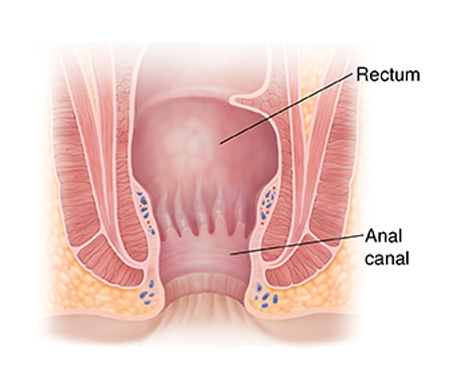
Anal stenosis refers to narrowing of the anal sphincter and opening. The most typical first symptoms, not surprisingly, are narrowing of the stool and difficulty or resistance moving the bowels. If this begins to happen, either coming on abruptly or slowly, this is the time to be concerned.
It’s a quiet condition that leads to many other conditions because it causes a patient to push or strain to move the bowels and that pressure directly causes hemorrhoids – but that’s just the start. For one thing, hemorrhoids further narrow the passage or opening, so the stenosis becomes worse, and the pressure and pushing when eliminating increases. Something has to give and the opening can easily tear or split, which is to create a fissure. In fact stenosis is the biggest reason why fissures develop.
To back up a minute, there are three ‘levels’ of the anal sphincter and any or all of them can become tight. The outer two you control consciously and the inner ring, more part of the rectum, isn’t under conscious control. That’s the one that usually becomes stenotic.
Rectal stenosis (or proctostenosis) is similar to anal stenosis but deeper – it’s a narrowing of the rectal canal. Usually a stenotic patient will have both and just be tight all the way through.
Stenosis has always been treated, believe it or not, by simply cutting through one side of the sphincter to relieve the tension. Called a sphincterotomy, it simply defeats the action of a sphincter muscle which is to close, and has the side effect, of course, of fecal incontinence or leaking of fecal matter. It’s a barbaric procedure left over from an earlier age.
Let’s be glad there are alternatives. I have developed a unique procedure that I call the Cranford Technique and I believe I’m still the only person who performs it (until I teach it and license it to another doctor). What I’ve learned is that a narrowed sphincter, even one with true stenosis, can be manually dilated, under an aesthesia, to open it back up to original size. Then it's treated topically so the muscle gets used to staying open.